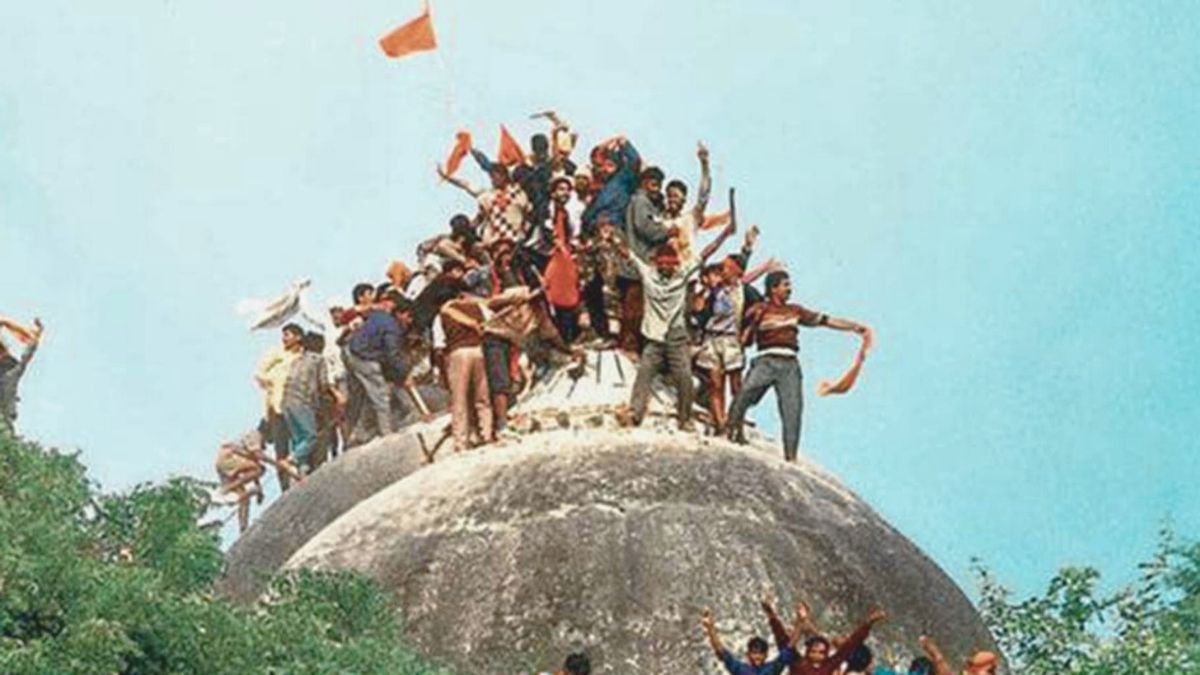Babri Masjid demolition was a dark chapter for Indian heritage and architecture

29 years ago, India lost a significant Mughal architecture and heritage, but Babri Masjid demolition lit the country's political landscape forever
On December 6, 1992, India lost heritage and architecture above all. The Babri Masjid demolition did stop the wheels of secularism in modern India and gave birth to one of the biggest political issues of the country.
The Archaeological Survey of India must have found the existence of “indigenous” and “non-Islamic” structures beneath the rubble of a broken mosque. But it turned into a tormenting question about India before British rule.
The masjid demolition for many right-wing leaders did not associate with our secularism thought. The question of tarnishing secularism prevailed in the violence-inciting speech of our leaders. Amidst all these, young leaders who took part in the Rath Yatra – some of whom hold or held cabinet berths – had got their biggest political mascot. The Opposition also got a better chance of grasping the empty land of secular politics.
The symbol of Mughal architecture
India has attracted a lot of foreign rulers since the early 1500s. Amongst them, the most popular one was Babur’s Mughal dynasty that ruled India till the British arrived at its ports for trade. Mir Baqi, who built the mosque in 1528–29 on the instruction of Babur, stood as a symbol of heritage and Mughal architecture.
The Mughals were great patrons of art and architecture. They have built many fine tombs, mosques and madrasas in a distinctive style that was influenced by later Tughlaq architecture. Their buildings, tombs, mosques portrayed the easy blend of distinctive Tughlaq and regional architecture.
The Babri Masjid was a replica of the Delhi Sultanate architecture. It was built during their reign. Similar styles of mosques are seen in the southern suburb of Gaur.
According to Graham Pickford, architect to Lord William Bentinck, a whisper from the Babri Masjid mihrab could be heard clearly at the other end, which is 200 feet away and through the length and breadth of the central court.
In his book, "Historic Structures of Oudhe", Pickford says, "For a 16th-century building the deployment and projection of voice from the pulpit are considerably advanced, the unique deployment of sound in this structure will astonish the visitor.”
The resonant qualities of the sandstone used in the construction had contributed to its unique acoustics. Babri Masjid symbolises the classic Tughluquid style building with style elements like arches, domes and vaults. It had a high ceiling and six grill windows for better airflow and cool interiors.
Babri Masjid demolition
As per Sarvepalli Gopal’s book, "Anatomy of a Confrontation: Ayodhya and the Rise of Communal Politics in India", in December 1949, the Hindu organisation -- Akhil Bharatiya Ramayana Mahasabha -- held a non-stop nine-day recitation of the Ramacharitamanas outside the mosque. Towards the end of the event, on December 22 night, around 50–60 people entered the mosque and placed Rama idols there.
The next morning, organisers of the chant asked Hindu devotees to visit the mosque for a darshan. Thousands of Hindus visited the place after the word about the idol spread. It forced the government to declare the mosque a disputed area and lock its gates.
After 40 years, the BJP, VHP and RSS leaders gathered at the mosque site to pray and perform a symbolic Kar Seva. At noon, a teenage Kar Sevak was vaulted onto the dome that signalled the breaking of the outer cordon. A large number of Kar Sevaks demolished the mosque after hammering the outer cordon.
The air of communalism
This incident stood as a testament to non-secularism air in India. The inscription on the walls has proved that the mosque was built by Mir Baqi before the British rule. Secular India would have continued to offer prayers mutually at the site and left Indian history unscathed.
The violence-inciting speech of the young leaders was not secular. It is a criminal offence as it led to communal riots across India. According to an individual account of the event, published in The Wire, that night was dark and scary. That night, neighbours became hostile but whose presence in the group assured their lives and allowed stones to shatter the glass windows.
The riots spread across India, including Mumbai, which killed 2,000 people. Muslim homes and shops were ransacked and torched. That day, 23 local mosques were demolished in Ayodhya. It is non-secular.
Most right-wing leaders and others who were part of the Rath Yatra still take pride in demolishing a historical monument. They believe the then government was busy doing Muslim-appeasement politics. The demolition does not have much to do with what secularism stands for.
For argument's sake, their thoughts about the incident might be valid as Indian politics endorse minority appeasement. However, does the exciting speech of the leaders, resulting in the violence, the riots, the killing constitute a secular character?
Babri Masjid: A political issue
In India, it does not take much time to change an event to a cycle of a political proposition. Soon after the incident, Kalyan Singh of BJP led the UP government. Ayodhya is in Uttar Pradesh or UP.
Similar incidents in the later years have given rise to parties who believe in secular characters but ends up in the lap of appeasement politics. Even in 2014, the promise of building a Ram Mandir where the mosque once stood heard claps and excited hooting. It was one of the primary reasons for the massive win of the BJP.
The next state election in 2017 was fought on the same issue. Yogi Adityanath of BJP became the CM of Uttar Pradesh on the promise of “Mandir wahi banega”.
Not to forget, UP contributes the maximum number of seats in the Indian Parliament. Therefore, it defines the communal character of UP politics that has influenced national politics at large by now.
https://www.digpu.com/india-news/babri-masjid-demolition-was-dark-chapter-for-indian-heritage-and-architecture
Comments
Post a Comment